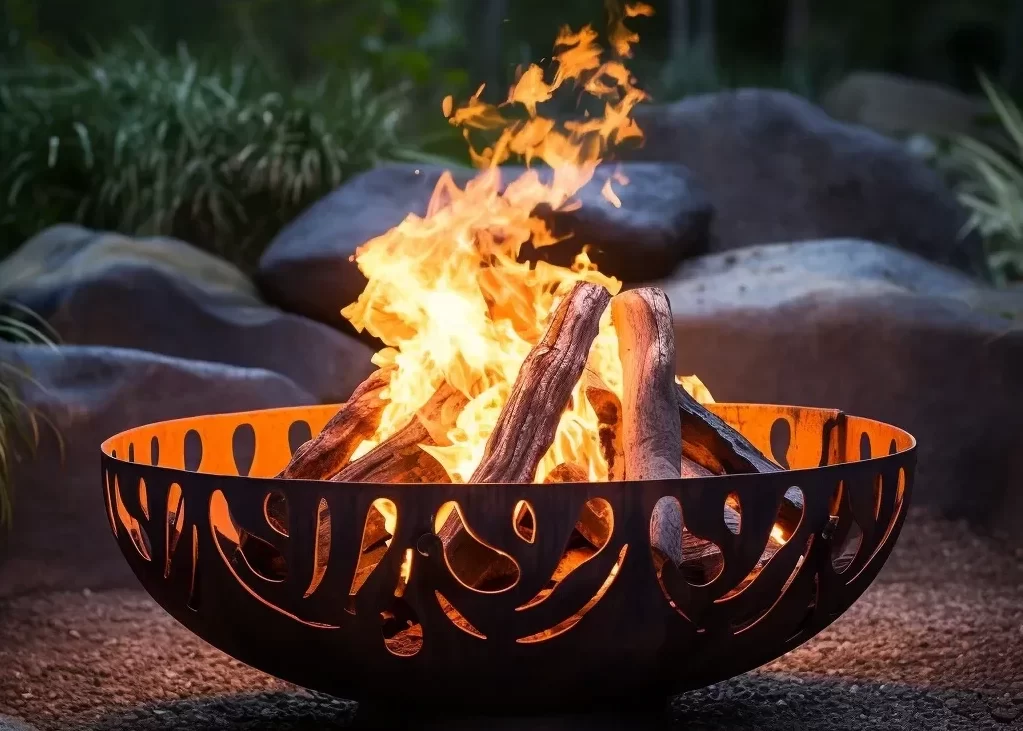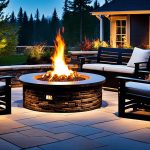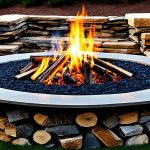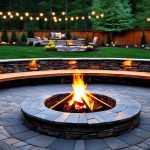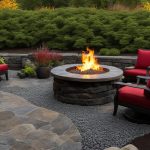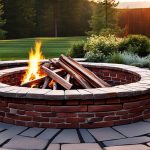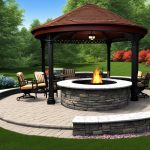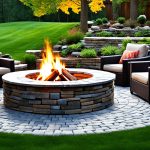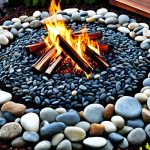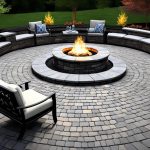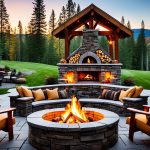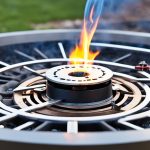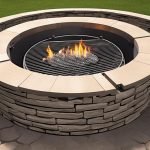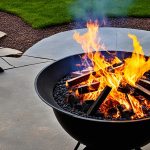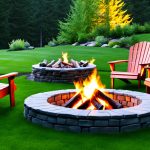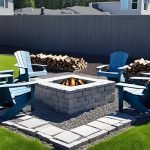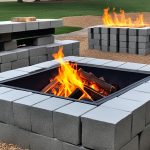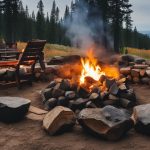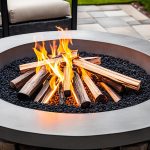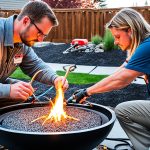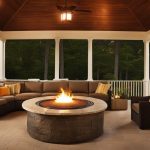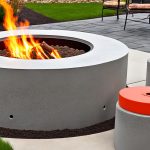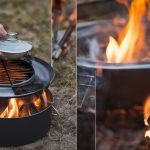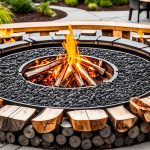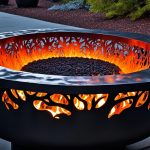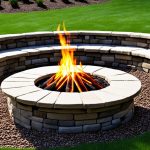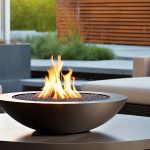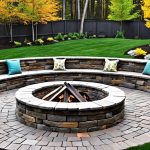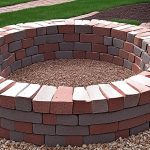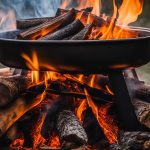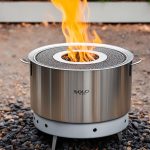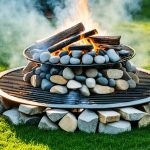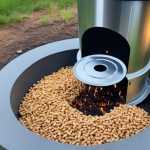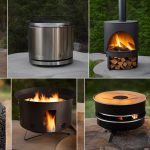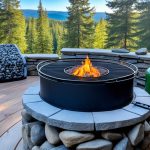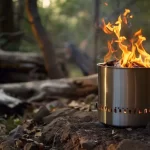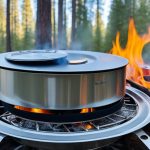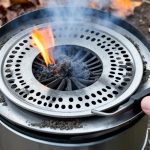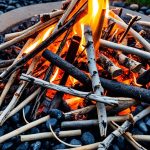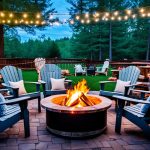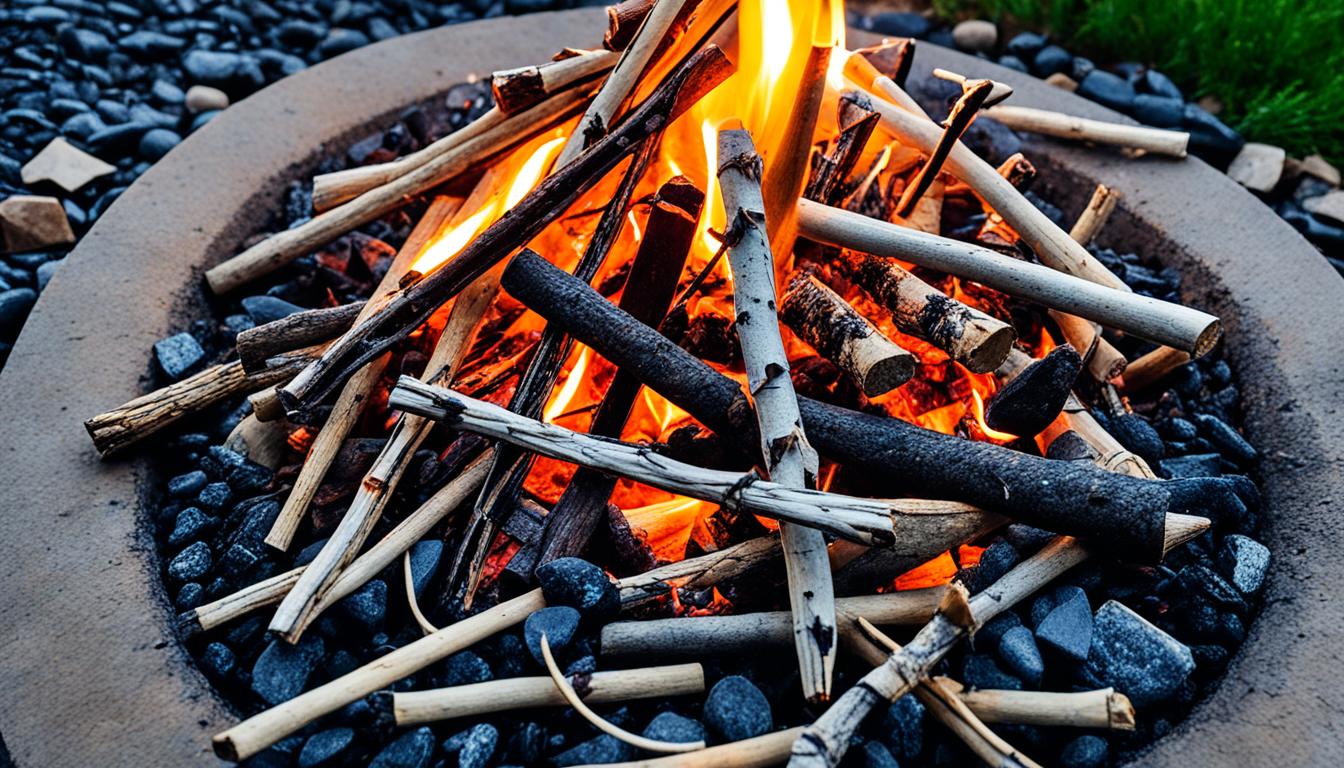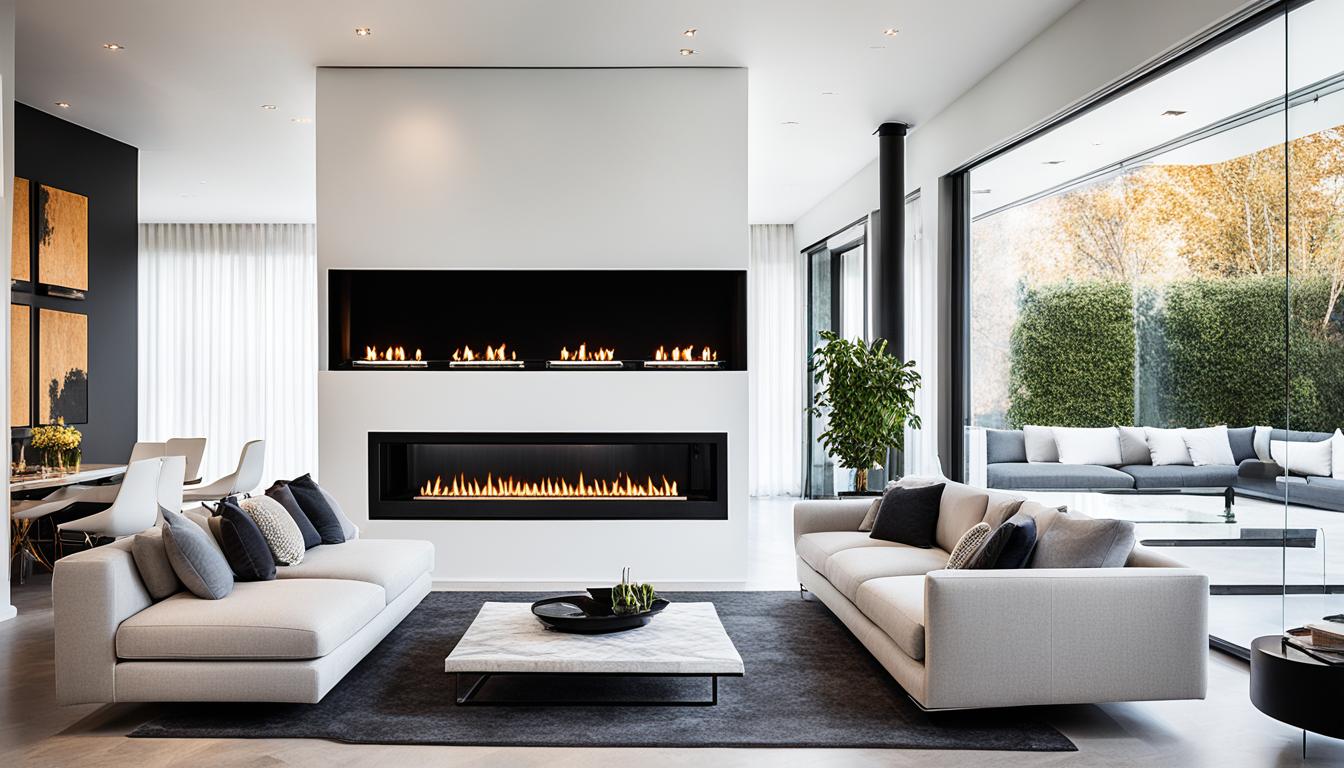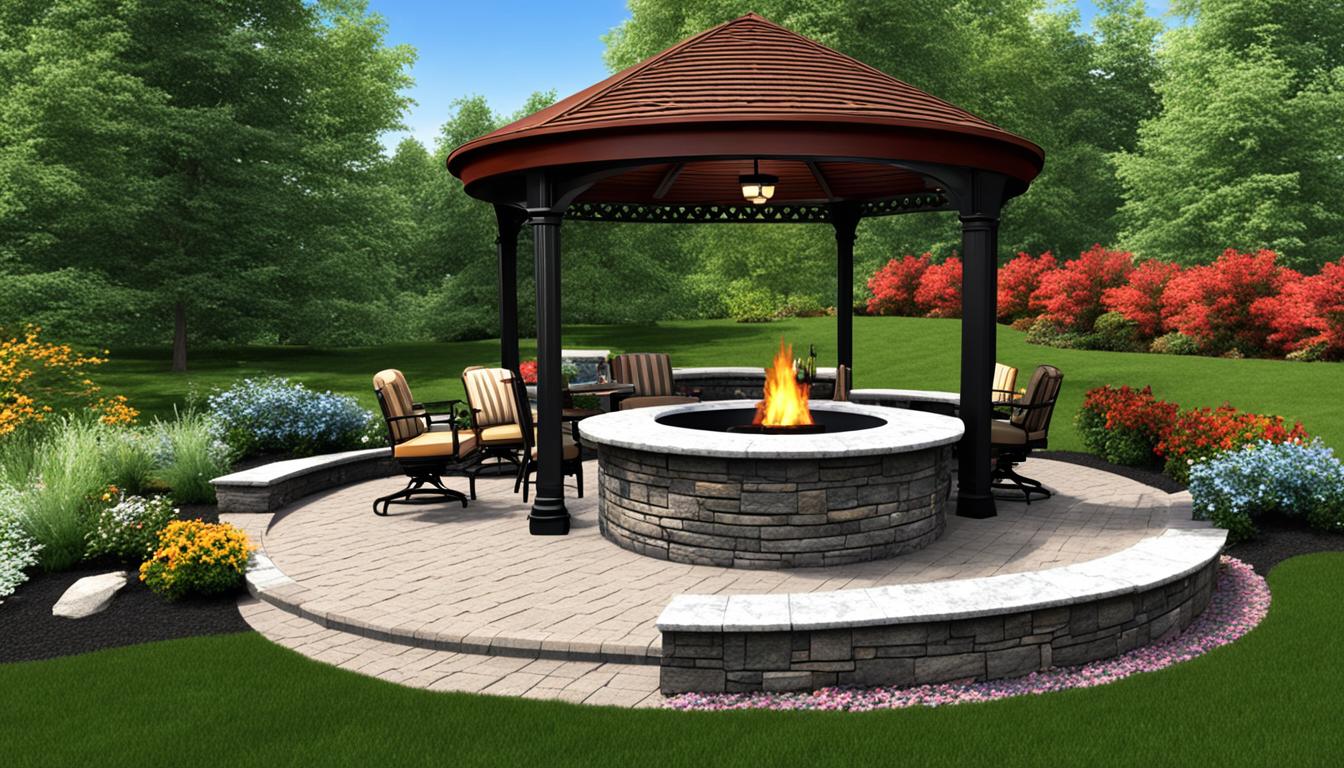Are you ready to ignite the perfect fire in your fire pit? Whether you’re planning a cozy night under the stars or gathering with friends for a backyard barbecue, knowing how to start a fire in a fire pit is essential. But do you know the best techniques to ensure a successful fire every time?
Starting a fire in a fire pit requires more than just tossing in a match and hoping for the best. It requires careful preparation, the right materials, and a strategic approach. So, how can you master the art of starting a fire in a fire pit? Let’s dive in and discover the step-by-step guide and time-tested techniques that will make your fire pit the centerpiece of your outdoor gatherings.
Key Takeaways:
- Starting a fire in a fire pit requires careful preparation and the right materials.
- There are various fire pit fire starting techniques that can help you ignite your fire safely and efficiently.
- Fire pit safety precautions should always be followed to ensure a safe and enjoyable fire-building experience.
- Selecting the right kindling and tinder is crucial for building a strong and sustainable fire.
- Choosing the right wood for your fire pit can greatly enhance the quality of your fire.
Fire Pit Safety Precautions
Before you start a fire in your fire pit, it’s crucial to prioritize safety. Taking the necessary precautions will not only prevent accidents but also ensure an enjoyable fire-building experience. Whether you are a seasoned fire pit enthusiast or a beginner, these fire pit safety tips will help you stay safe and protect your property.
Fire Pit Location
When selecting a location for your fire pit, there are some important considerations to keep in mind:
- Ensure that the fire pit is placed on a stable, non-combustible surface, such as concrete or stone.
- Keep a safe distance (at least 10 feet) from any structures, trees, or flammable materials.
- Ensure there are no low-hanging branches or overhead obstructions that could catch fire.
Clear the Area
Prior to starting the fire, clear the surrounding area of any debris, dry leaves, or flammable materials. Creating a clear perimeter around the fire pit will help prevent accidental sparks or embers from igniting nearby objects.
Keep a Fire Extinguisher Handy
Having a fire extinguisher nearby is a critical safety measure. In case a fire gets out of control, a fire extinguisher can help you quickly extinguish the flames and prevent further damage. Make sure you know how to operate the fire extinguisher before starting the fire.
Supervise the Fire
Never leave your fire pit unattended. It’s essential to keep a close eye on the fire at all times, especially when there are young children or pets nearby. Accidents can happen within seconds, so stay vigilant and fully present while the fire is burning.
Control the Fire
While enjoying your fire pit, it’s crucial to maintain control over the flames:
- Avoid using accelerants, such as gasoline, to start or enhance the fire. These can lead to unpredictable and dangerous fire behavior.
- Keep the fire at a manageable size. An excessively large fire can generate excessive heat and sparks, increasing the risk of accidents.
- Use a fire screen or spark arrester to prevent embers from escaping the fire pit.
Extinguish the Fire Properly
When you’re ready to extinguish the fire, follow these steps:
- Allow the wood to burn completely or use a shovel to separate the burning pieces.
- Slowly pour water over the fire, making sure to fully douse the flames and embers.
- Stir the ashes and embers to ensure that they are completely soaked.
- Continue adding water and stirring until all the ashes are cool to the touch.
Implementing these fire pit safety tips will help you enjoy your fire pit responsibly and minimize potential risks. Remember, fire safety is paramount when it comes to creating a safe and inviting atmosphere for you, your loved ones, and your property.
Selecting Kindling and Tinder for Your Fire Pit
The success of starting a fire in your fire pit depends on the careful selection of the right kindling and tinder. These essential fire-starting materials play a crucial role in creating a strong and sustainable fire. In this section, we will explore different options for selecting kindling and tinder, guiding you towards a successful fire-building experience.
Understanding Kindling
Kindling: Small and highly combustible materials that ignite easily and help establish a solid foundation for your fire.
When it comes to kindling, there are several options available to fuel your fire pit:
- Dry twigs and branches: These can be collected from the ground (avoid picking them from live trees) and broken into smaller pieces for better ignition.
- Newspaper or cardboard: Crumple several sheets of newspaper or cardboard into tight balls to create quick-burning kindling.
- Pinecones: Dried pinecones serve as excellent kindling due to their natural resin content, which ignites easily and burns steadily.
Selecting Effective Tinder
Tinder: Highly flammable material that quickly catches fire and stays ignited long enough to ignite the kindling and larger firewood.
Choosing the right tinder is crucial for initiating a fire in your fire pit. Here are some effective tinder options:
- Dry leaves and grass: Collect dry leaves and grass from your surroundings, ensuring they are fully dry to enhance their flammability.
- Fire starters: Commercial fire starters, such as paraffin wax cubes or sawdust bundles soaked in wax, provide a convenient and reliable source of ignition.
- Cotton balls soaked in petroleum jelly: Coating cotton balls in petroleum jelly creates a highly flammable and long-lasting source of tinder.
When selecting kindling and tinder, it’s important to prioritize dry materials. Moist or wet materials can hinder the ignition process, leading to frustration and extended fire-starting times. Remember to store your kindling and tinder in a dry place to maintain their effectiveness.
In this section, we discussed different options for selecting kindling and tinder to help you build a strong and sustainable fire. The right choice of kindling and tinder materials is crucial for ensuring a successful fire-starting experience in your fire pit.
Comparing Kindling and Tinder Options
| Kindling Options | Tinder Options |
|---|---|
| Dry twigs and branches | Dry leaves and grass |
| Newspaper or cardboard | Commercial fire starters |
| Pinecones | Cotton balls soaked in petroleum jelly |
By carefully selecting the right kindling and tinder materials, you can set the stage for a successful fire in your fire pit. Experimenting with different options and finding the combination that works best for you will ensure a warm and enjoyable experience during your outdoor gatherings.
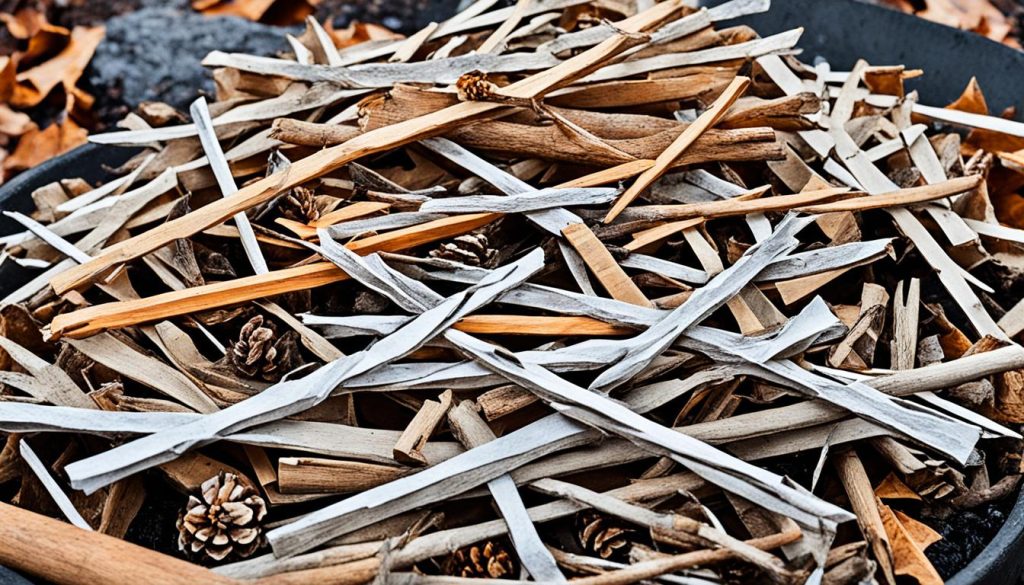
Choosing the Right Wood for Your Fire Pit
The type of wood you use in your fire pit can greatly impact the quality of your fire. Different wood options offer various burning characteristics, scents, and even colors. To create a warm and inviting fire, it’s important to carefully consider your fire pit wood selection. Here are some tips to help you choose the right wood:
- Hardwood versus Softwood: Hardwoods like oak, hickory, or maple are denser and burn longer, providing a steady source of heat. Softwoods like pine or cedar ignite quickly but may burn faster. Consider your desired burn time and heat intensity when deciding between hardwood and softwood.
- Mature and Seasoned Wood: It’s best to use mature and seasoned wood in your fire pit. This means the wood has been cut, split, and left to dry for at least six months. Seasoned wood burns more efficiently, produces less smoke, and reduces the risk of excessive creosote buildup.
- Noxious Odor-Free Wood: Avoid using wood that releases excessive smoke, strong odors, or harmful chemicals when burned. Opt for wood varieties known for their pleasant aroma, such as apple, cherry, or mesquite. These woods can add a delightful scent to your outdoor gathering.
- Sustainably-Sourced Wood: Consider using fire pit wood sourced from sustainably managed forests or certified suppliers. By choosing eco-friendly options, you can minimize your environmental impact and contribute to responsible wood consumption.
Remember, the type of wood you choose can impact more than just the ambiance of your fire. It can also affect the cooking flavors if you plan to use your fire pit for grilling or smoking. Selecting the right wood will enhance your overall fire pit experience.
Selecting Fire Pit Wood Based on Purpose
Depending on your intended use for the fire pit, you may want to consider specific wood types:
| Fire Pit Purpose | Recommended Wood Types |
|---|---|
| Campfire Atmosphere | Oak, hickory, or birch |
| Cooking or Grilling | Fruitwoods like apple, cherry, or pecan |
| Smoking Meats | Mesquite or hickory |
| Aesthetic Flames | Colorful woods like purple heart or blue pine |
Experiment with different wood combinations to achieve your desired fire pit experience. Don’t be afraid to mix and match wood types or try wood pellets for added convenience and controlled burn.
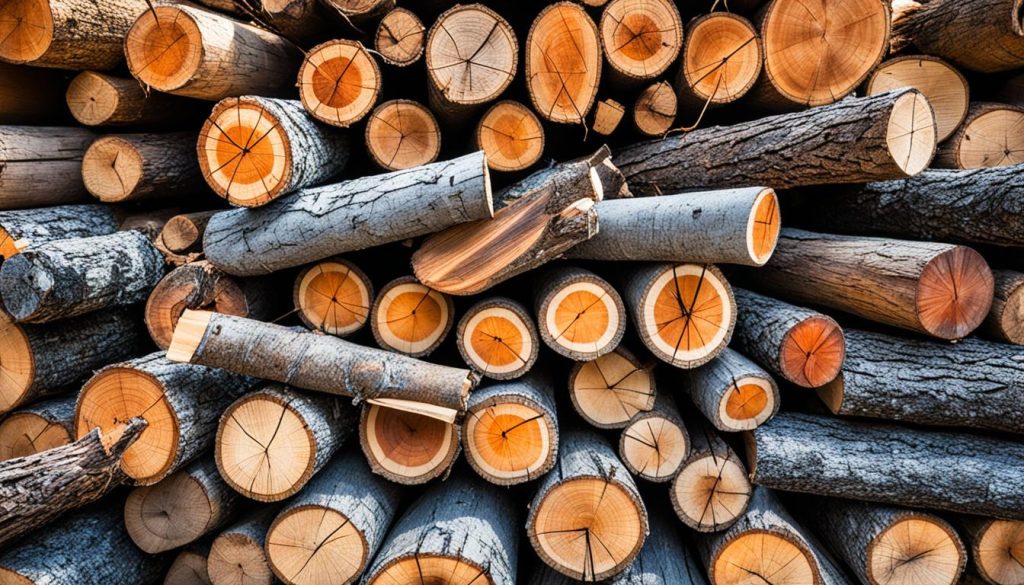
By carefully selecting the right wood for your fire pit based on burn characteristics, purpose, and sustainability, you can ensure a beautiful and enjoyable fire every time.
Ignition Methods for Starting a Fire Pit Fire
When it comes to starting a fire in your fire pit, there are several ignition methods you can use. Whether you prefer traditional methods or more modern approaches, each technique has its own advantages and can help you ignite your fire safely and efficiently.
One of the most common and straightforward methods is using matches. It’s a classic choice that requires little effort. Simply strike a match and carefully light your kindling. Matches are easily accessible and can be purchased at most convenience stores.
For those looking for a convenient option, lighters are a popular choice. With a flick of your thumb, you can produce a flame that’s perfect for starting your fire. Lighters can be refilled and reused, making them a cost-effective choice for fire pit enthusiasts.
If you prefer a more foolproof option, fire starters are a reliable choice. These compact devices are specifically designed to ignite fires quickly and efficiently. They often come in the form of sticks or cubes that can be placed directly under your kindling or tinder.
Regardless of the method you choose, it’s important to prioritize safety throughout the process. Always keep a safe distance from the fire and make sure to properly extinguish it when you’re finished enjoying its warmth.
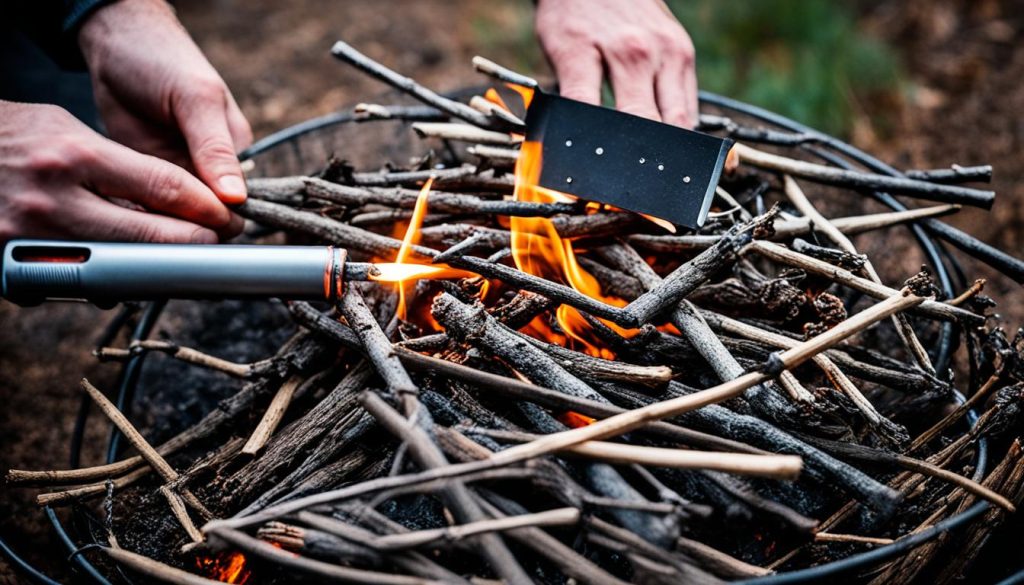
| Ignition Method | Advantages |
|---|---|
| Matches | – Classic and easily accessible – Requires minimal effort – Suitable for small fires |
| Lighters | – Convenient and portable – Can be refilled and reused – Produces a steady flame |
| Fire Starters | – Quick and efficient ignition – Compact and easy to use – Ideal for larger fires |
Whichever method you choose, it’s essential to follow proper safety precautions and make sure you have the necessary tools and materials on hand. By selecting the right ignition method and practicing responsible fire pit use, you can create a cozy and inviting atmosphere for your outdoor gatherings.
Building a Fire in Your Fire Pit
Now that you have all the necessary components—kindling, tinder, and wood—it’s time to start building your fire in the fire pit. Follow these step-by-step instructions to ensure a successful fire-building experience:
- Clear the area around your fire pit of any flammable materials, such as dried leaves or grass.
- Arrange your kindling in a small mound or teepee shape in the center of the fire pit.
- Place a handful of tinder material, such as dry leaves or newspaper, in the center of the kindling.
- Light the tinder using a match, lighter, or fire starter. Ensure the flame reaches the kindling.
- As the kindling catches fire and starts to burn, gradually add more kindling pieces to build the fire.
- Once the kindling is burning well, carefully add larger pieces of wood to create a steady flame.
- Continue adding wood as needed to maintain the desired fire size and intensity.
It’s important to note that different fuels can produce varying results in terms of flame size, heat output, and scent. Here are some fuel options you can consider for your fire pit:
- Firewood: This is the most common fuel option for fire pits. Choose hardwoods like oak, maple, or hickory for long-lasting and consistent fires.
- Fire Logs: Fire logs are compacted sawdust and wax, providing a convenient and clean-burning fuel source. They are often easier to handle and produce less smoke.
- Gel Fuel: Gel fuel comes in cans or canisters and offers a smokeless and odorless option. It’s a great choice for smaller fires and portable fire pits.
- Propane: Propane fire pits provide instant heat and flame and are incredibly convenient to use. They require a propane tank and can be a good option for those who prefer a hassle-free fire pit experience.
Regardless of the fuel option you choose, proper maintenance is essential to keep your fire pit in good condition. Here are some maintenance tips to follow:
- Regularly clean out ash and debris from your fire pit to prevent buildup and ensure optimal airflow.
- Inspect the fire pit for any signs of wear or damage, such as rust or cracks, and address them promptly.
- Store firewood in a dry and well-ventilated area to prevent moisture buildup and ensure it burns effectively.
- Keep a fire extinguisher or a bucket of sand nearby for emergencies.
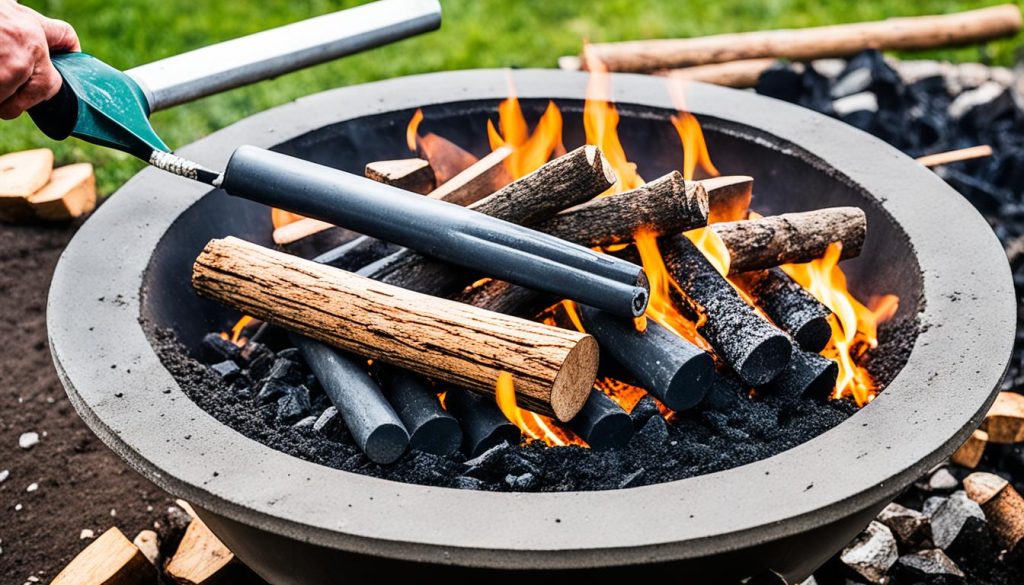
| Fuel Option | Advantages | Disadvantages |
|---|---|---|
| Firewood | Produces a traditional wood-burning fire with crackling sounds and aromatic scents. | Requires storage space, may produce more smoke and ash. |
| Fire Logs | Convenient and easy to use, cleaner burning with less smoke and ash. | Slightly more expensive, may lack the ambiance of a natural wood fire. |
| Gel Fuel | Smokeless and odorless, provides a controlled flame size and burn time. | May be less readily available, not suitable for large fires. |
| Propane | Instant flame and heat with no need for additional fuel preparation. | Requires a propane tank, may lack the authenticity of a wood-burning fire. |
By following these fire-building steps, considering the different fuel options available, and maintaining your fire pit properly, you can enjoy countless cozy evenings gathered around a warm and inviting fire.
Conclusion
Starting a fire in a fire pit is not only a practical necessity but also a wonderful way to enhance your outdoor gatherings. By following our step-by-step guide, you can have a rewarding and enjoyable experience building a warm and inviting fire.
Remember, safety should always be your top priority. Take the necessary precautions to ensure a safe fire-building process, such as clearing the area around the fire pit and keeping a fire extinguisher or water source nearby.
In addition to safety, proper maintenance is crucial for the longevity of your fire pit. Regularly clean out ashes and debris, and inspect the fire pit for any signs of wear or damage. This will help keep your fire pit in good condition and ensure many more years of enjoyment.
So get ready to gather around the fire pit with your loved ones, roast marshmallows, and create lasting memories. With the right techniques and precautions, you can create a cozy and inviting ambiance that will make your outdoor space truly special.

